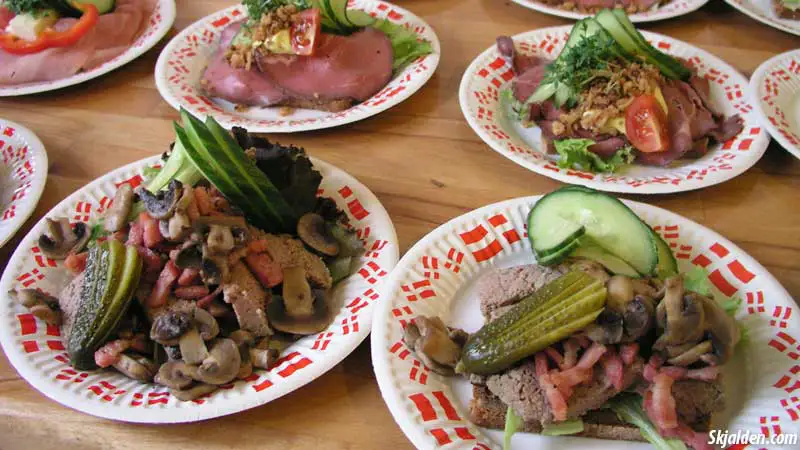Smørrebrød, a traditional Danish open-faced sandwich, has evolved from a basic meal to a culinary art form. Originating in the 19th century, smørrebrød was initially a simple meal for workers, but today, it represents the essence of Danish culinary tradition, combining simplicity with creativity. This article explores the rich history, varieties, and cultural significance of smørrebrød, offering insights into its preparation and enjoyment.
The History and Evolution of Smørrebrød
Smørrebrød began as a humble workers’ lunch in Denmark, consisting of a piece of buttered rye bread (rugbrød), topped with leftovers from dinner. The word ‘smørrebrød’ itself directly translates to ‘butter and bread’, indicating its simple roots. However, over time, it has transformed into an elaborate and aesthetically pleasing dish.
Traditionally, the foundation of smørrebrød is dense, dark rye bread, known for its hearty texture and nutty flavor. The bread is liberally buttered to prevent it from becoming soggy. Toppings include a variety of cold cuts, meat, fish, cheese, and spreads, often beautifully arranged. Pickled herring, roast beef, liver pâté, and smoked salmon are common choices, accompanied by decorative and flavorful garnishes like cucumber slices, radishes, dill, or horseradish.
A Symbol of Danish Culinary Heritage
In recent years, smørrebrød has seen a resurgence, with chefs experimenting with new flavors and presentations. Contemporary interpretations might include global ingredients like avocado, sun-dried tomatoes, or exotic spices, reflecting the changing palate and cultural influences. This evolution showcases the versatility of smørrebrød and its ability to adapt to modern tastes while still respecting its roots.
Smørrebrød is more than just a meal; it’s a symbol of Danish culture and a point of national pride. In Denmark, preparing and eating smørrebrød is almost a ritual, reflecting the Danish emphasis on both aesthetics and quality. It’s common in Danish households and restaurants, especially for lunch.
Culinary schools in Denmark often teach the art of making smørrebrød, emphasizing the balance of flavors, textures, and visual appeal. This training highlights the respect and importance given to this dish in Danish cuisine.
The Social Aspect of Smørrebrød
Smørrebrød is also associated with social gatherings and special occasions. It’s common to see a variety of smørrebrød at Danish celebrations, with guests enjoying the different combinations on offer. This aspect of sharing and socializing over food is central to Danish hospitality and lifestyle.

Key Elements of Preparing Smørrebrød
The preparation of smørrebrød requires attention to detail. The bread must be fresh, and the butter, ideally, is of high quality. The layering of toppings is done with both flavor and presentation in mind. A balance of textures and tastes is crucial – the creamy, the crunchy, the salty, and the sweet must harmonize.
For home cooks interested in creating their smørrebrød, the key is to start with good ingredients and think about color and contrast. A simple smoked salmon smørrebrød might include a spread of cream cheese, slices of salmon, topped with capers, red onion, and a sprig of dill.
When it comes to enjoying smørrebrød, there are a few customary practices. It’s typically eaten with a fork and knife, reflecting its often elaborate and stacked nature. Pairing smørrebrød with a Danish beer or traditional aquavit enhances the experience, complementing the flavors of the toppings.
